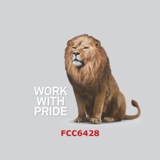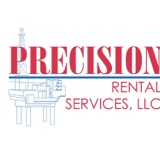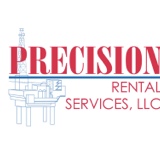Information
-
Document No.
-
Audit Title
-
Client / Site
-
Conducted on
-
Prepared by
-
Location
-
Personnel
Safety Management
1. Facilities conditions/ equipment /toilets/ water:clean safe secure and tidy
-
Site shed installed correctly (level/stable/secured)? Good access/egress to accommodation?
-
Maintained in tidy condition? Are clean and waste bins supplied? Certified temporary power supply? Emergency equipment (fire extinguishers, air horns etc.) available?
-
Adequate welfare - seating/tables/water supply/washing facilities/toilets.
2. Employee Involvement
-
JSEA up to date and current hazards, identified, Employees signed into JSEA, Employees using Daily Hazard ID process, Employees aware of emergency procedures, Employees trained to use equipment (tools and plant), Employees raise H&S issues, Employees participate in Toolbox talks, Employees made aware of company Safety Alerts, Employee involved in Safety Inspections etc.
3.TMP current and Public Protection & Access/Egress
-
Hoarding complies with company requirements - is in good order/warning signage/mesh fitted. Safe access/egress from site. Gates manned where required.
-
TMP current, Crossings clear with no obstructions. Parking and visitor controls in place. Overhead protection established where required - pedestrian tunnels/scaffolding fans etc.
4. Emergency Procedures
-
Emergency procedures established and displayed on site. Assembly areas designated. Emergency wardens nominated and trained. Emergency alarm satisfactory/tested. Emergency contacts displayed.
-
Trial evacuation conducted.
5. Hazardous chemical Management and Spill Control
-
MSDS’s available for all chemicals. Chemicals material clearly identified. Chemicals properly stored (bunding), handled and used. Suitable PPE available/used. Users of chemicals properly informed. Adequate ventilation provided. Chemical container/residue disposal properly controlled. Are all chemical/fuels stored in appropriate areas? Etc.
6. Safety Management permits etc
-
DOL Notification submitted and correct issues covered, H&S Management plan in place, Safety Supervisor/Safety Reps, Inductions performed (Site Specific), Employee Safety Training, H&S Inspections, Accident Investigation and reporting protocols followed, Crane/lifting incidents reported in line with company procedures, First Aid facilities, Toolbox talks, H&S Policy displayed, Hazard register, Hazard board etc.
-
Dig permit in place and current. Service plans for area available. Stand-overs present. Underground services located via scanning or radar (competent personnel used). Services clearly marked. Potholing carried out by hand digging or hydro-excavation (appropriated hand tools being used). Any excavation carried out with toothless bucket. Spotter directing excavator. Fire retardant overalls worn when working around HV cables. No smoking around gas lines. Relocated services surveyed and clearly marked where within site. Etc.
7. Plant & Equipment - Earth Moving
-
Operators/drivers authorised (O.C.A. Programme). Drivers licences/qualifications checked. Check sheets completed.
-
Certified hooks on excavators. Reversing alarms fitted and operational. Hydraulic attachment supported during repair/maintenance. ROPS and FOPS fitted.
-
Reversing vehicles controlled by spotter. Seat belts worn. Etc.
8. Subcontractor Management
-
Subcontractor Health & Safety Plans, Subcontractor H&S Policies, Subcontractors' Hazard Register, Subcontractors Task Analysis, Subcontractor Training records, D&A records held on site, Inspections and Audits, Toolbox Meeting Minutes, MDSD sheets, Safety Incident Reports and Investigation forms, Equipment Certificates etc.
9. First aid and General Safety Requirements
-
Housekeeping to acceptable level? Toilet/smoko sheds clean? Rubbish regularly removed?
-
Mechanical lifting devices used where possible? Loads being handled/moved correctly? Loads shared as required? Gloves worn? Employees instructed in correct lifting methods?
-
First aid equipment complete, available and correct? Cut book in first aid kit?
10. Fire fighting equipment:
-
Fire extinguishers readily available and personnel trained to use. No accumulation of flammable materials. Temporary water supply installed (where required).
11. Electrical
-
No work on "live" electrical systems. Current test certificate for temporary facilities. Lifeguards and transformers used where required.
-
Power leads and tools tested every three months and tagged. Lockout procedure in use where appropriate.
12. Lifting Equipment
-
Slings and shackles load rated. Soft Slings/Wire Slings in good condition – no broken strands/kinks. Shackles in good condition – not bent/twisted/pins align/threads goo., Man-cages certified and in good condition. Adequate storage of lifting equipment. Hooks in good condition – no distorted/damage. Hook safety catches in good condition/operational. Materials stacked/stored safely. Etc.
13. Portable Power Tools
-
Trade quality tools used. Proper guards installed and operations. Lifeguards/transformers in use. Face shield used when required. Power supply cables/leads clear of cutting blades. Adequate lighting provided. Auxiliary handles fitted.
-
Tools used by competent workmen; abilities accessed. Only authorised personnel using grinders and concrete saws.
14. Protective clothing:
-
Correct PPE worn? Safety footwear; suitable length clothing; high-vis; eye protection; appropriate footwear.
15. & 17 & 18. Site Access/Egress & Edge Protection
-
Access routes and signage established. Kept clear and free of obstructions. Unloading/storage/material handling controlled.
-
Routes have edge protection where required. Edge and penetration protection conforms to company requirements.
-
Ladders access arranged correctly. Steps and stairs conform to company requirements.
16. Excavation, Trenches and Services
-
Notification sent to OSH if deeper than 1.5 metres. Shoring to design and methodology developed. No persons in danger installing. Safety shield and guardrails installed. Proper access/egress provided. Sides battered/ benched. Daily inspections for stability (especially during wet weather). Overburden/machinery clear of the edge (600mm). Water hazards securely covered at night/weekends. Toxic/flammable gas checks performed where necessary. Stop blocks used when trucks backing up to unload materials. Etc.
19. Lifting rigging operations:
-
Competent operators/dogmen. US 20875, local hazards identified. Training register
20. Confined Space
-
All personnel involved in activity certified. Confined space permit completed. Calibrated and bump tested gas monitor used to test atmosphere. Safe access to confined space provided. Ventilation provided. Communication methods in place. Visibility/lighting arranged. Emergency plan/retrieval method. Emergency breathing equipment available. Task appropriate PPE provided. Register of personnel entering space. Etc.
Health Management
-
Plant and tools creating vibration controlled. Noise levels monitored/mitigated and protection provided. Dust suppression available/utilised.
-
Hours of work monitored/managed to avoid fatigue. Drinking water supplied and hydration promoted. Sun cream/hat brims provided. Health and wellness initiatives created/promoted
Working with Moving Equipment
15. Plant & Equipment - Telehandlers and Forkhoists
-
14. Road Vehicles - Six Wheelers/Company Utes
-
Spotters used to guide truck movements. Haul routes demarked. Site access protocols followed. Etc.15.
-
Company policies followed: Use of handheld phones and smoking prohibited in company vehicles; driving licences carried at all times; vehicles maintained and kept clean. Truck wheels checked before leaving site.
-
Operators/drivers authorised (O.C.A. Programme). Drivers licences/qualifications checked. Check sheets completed.
-
Outriggers utilised and feet placed on stable ground. Loads secure and tipped back when travelling. Attachments secured to forks. Rated lifting hooks and lifting gear certified. Pallets stacked well and only two high.
16. Piling Plant
-
Vibro hammer: hoses/cables, jaw clamp operation, and leaders checked and serviced as required.
-
Storage of tooling/equipment/cages appropriate. Reo bar ends protected. Safety lashings on lifting equipment (shackles moused).
-
Two slings used for lifting casings vertically in end lift. BPC procedure sued for lifting pile cages. Pitching pile clips and threaders correctly used. Permit completed for free fall operation. Etc.
21. Working at Height
17. Scaffolding (mobile)
-
Erected to suppliers instructions. No damaged components. Toe boards, handrails and mid rails fitted. Braced or tied as required. Ground surface stable/level. Wheel brakes fitted and locked when in use. Height no more than three times least base measurement. Working decks fully planked. Internal access ladders installed through trap door hatc. Obstruction and overhead hazards identified etc.
17. Scaffolding - System/tube and clip/freestanding
-
Register maintained (5m and over). Scaffolding assembled correctly. Ties adequate and correct numbers. Comply with minimum widths. Equipment supplied in good condition. Handrails, midrails and kickboard installed. Safety screen installed near public areas. Planks in good condition; clipped/tied down; access arranged correctly. Base plates and sole plates correctly aligned. Materials stacked and evenly spread. Scaffodling tage fitted. Scaffolds checked weekly, following alteration or adverse weather etc.
18. Individual Fall Arrest
-
Design out working at height when possible. Fall restraint prioritised over fall arrest. Correct system and harness used. Personnel using fall restraint/arrest systems adequately trained. Equipment inspected and tagged. Anchorage points adequate for harness (or life line). Rescue plan in place. Etc.
18 Elevating Work Platforms - Cherry Pickers/Scissor Lifts
-
Current certificate of fitness attached to unit. Safe working load known and not exceeded. Operators adequately trained (NZQA / HIANZ or attestation). Operating manual available. EWP set up on stable ground. Outriggers properly extended before use. Outriggers securely positioned before use. Timber supports under outriggers where required. No obstructions/ live electrical conductors nearby. All persons aloft in EWP in fall restraint (harness/lanyard worn). Task analysis undertaken for scissor lifts if harnesses are not being worn. Etc.
19. Edge Protection, Penetrations and Ladders
-
Protection to suitable standard in place to open edges; trenches, roofs, bridges etc. Penetrations to concrete slabs, drainage, and M&E equipment correctly covered, secured and demarked. Ladders correctly set up, for access only, of industrial grade, un-damaged and clean etc.
16. Trenches and Services
20. Excavation, Trenches and Services
-
Notification sent to OSH if deeper than 1.5 metres. Shoring to design and methodology developed. No persons in danger installing. Safety shield and guardrails installed. Proper access/egress provided. Sides battered/ benched. Daily inspections for stability (especially during wet weather). Overburden/machinery clear of the edge (600mm). Water hazards securely covered at night/weekends. Toxic/flammable gas checks performed where necessary. Stop blocks used when trucks backing up to unload materials. Etc.
21. Confined Space
-
All personnel involved in activity certified. Confined space permit completed. Calibrated and bump tested gas monitor used to test atmosphere. Safe access to confined space provided. Ventilation provided. Communication methods in place. Visibility/lighting arranged. Emergency plan/retrieval method. Emergency breathing equipment available. Task appropriate PPE provided. Register of personnel entering space. Etc.
19. Lifting Operations
22. Cranes - Crawler/Mobile/Tower/Truck Mounted
-
Current certificate of fitness. Weekly checks recorded and defects identified. Competent operators/dogmen. Warning devices operating properly. Logbooks maintained. Load and radius charts available/displayed. Enough room for operation – local hazards identified. Levelled before use (platform designed where required). Outriggers extended. Spreader pads used (placed on stable ground). Hook not in use tied back. Controls clearly marked. Reversing alarms fitted and operational. Seat Belts worn where fitted. Etc.
22. Cranes - Crawler/Mobile/Tower/Truck Mounted
-
Current certificate of fitness. Weekly checks recorded and defects identified. Competent operators/dogmen. Warning devices operating properly. Logbooks maintained. Load and radius charts available/displayed. Enough room for operation – local hazards identified. Levelled before use (platform designed where required). Outriggers extended. Spreader pads used (placed on stable ground). Hook not in use tied back. Controls clearly marked. Reversing alarms fitted and operational. Seat Belts worn where fitted. Etc.
23. Precast Concrete
-
Proper lifting eyes/lift pins used. Checked for cracking around lifting points prior to lifts. Site storage correct – not ‘stressing’ units. Units at correct strength before lifting. Lifting equipment checked. Quality checks carried out (where appropriate). Etc.
24. Formwork and Falsework
-
Is there a safe work method statement regarding erection/fall protection? Designed by a registered engineer. Erection to design. Components checked for damage. Footings adequate - to design. Braces adequate - to design. Props plumb and secure by pins. Screw jacks properly seated. Forkheads centrally wedged. Correct steel pins through props. Live loads allowed for during pouring. Etc.
Hot Works - Welding, Gas Cutting and Cylinder Safety
-
Permit in place. Area checked for flammable substances. Anti-flash screens used for electric welding where possible. Fire extinguisher close to hand. Helmet, hood, goggles, gloves, jackets, and spats used where applicable. Spark protection for others. Gauges/hoses regularly checked for leaks. Flashback arrestors used. Startup/shut down procedures used. Adequate ventilation provided. Fume protection (extractors/masks) used where necessary. Previous use of containers checked before cutting/welding. Storage – separate fuel/oxygen. Gas bottles kept vertical, secured, and protected against sparks. Hoses not wrapped round bottles when in use. Bottles turned off when not in use. No bottles in confined spaces. Etc.
Environmental
Environmental audit questions
-
20. Are all environmental risks hazards identified on HSE board
-
21. Does the site have
-
22. Is the site specific A3 EMP visible?
-
23. Are all the materials and equipment stored correctly?
-
24. Are spill kits and available and fully stocked?
-
25. Are ACM and coal tar being managed and disposed of appropriately?
-
26. Are stockpiles located appropriately with storm water diversion pipes?
-
27. Are waterways adequately protected by appropriate measures?
-
28. Are catch pits adequately protected?
-
29. Is sediment tank(s) operating properly. Is there sediment build up in the tank, are 2 hour check sheets completed?
-
30. Are sediment silt fences installed correctly and fit for purpose?
-
31. Is the discharge path clean?
-
32. Is Over pumping secure from traffic and vandalism? Fenced? Cable tied couplings? Pipe protected?
-
33. Is the overpumping occurring consistent with the waste water overpumping best practice guidelines?
-
34. Are trees properly fenced and drip lines free of machines and materials?
-
35. Is dust nuisance being managed appropriately?
-
36. Are pumps/generators appropriately located with effective mitigation?
-
37. If excavating in cat1 or cat2 is the monitoring sheet being completed?
-
38. Are heritage items on site adequately protected?
-
39. If working in a high risk archeological area has the crew been briefed by an archeologist?
-
40. Is the standpipe CCC approved and been read and serviced in the last 3 months?








